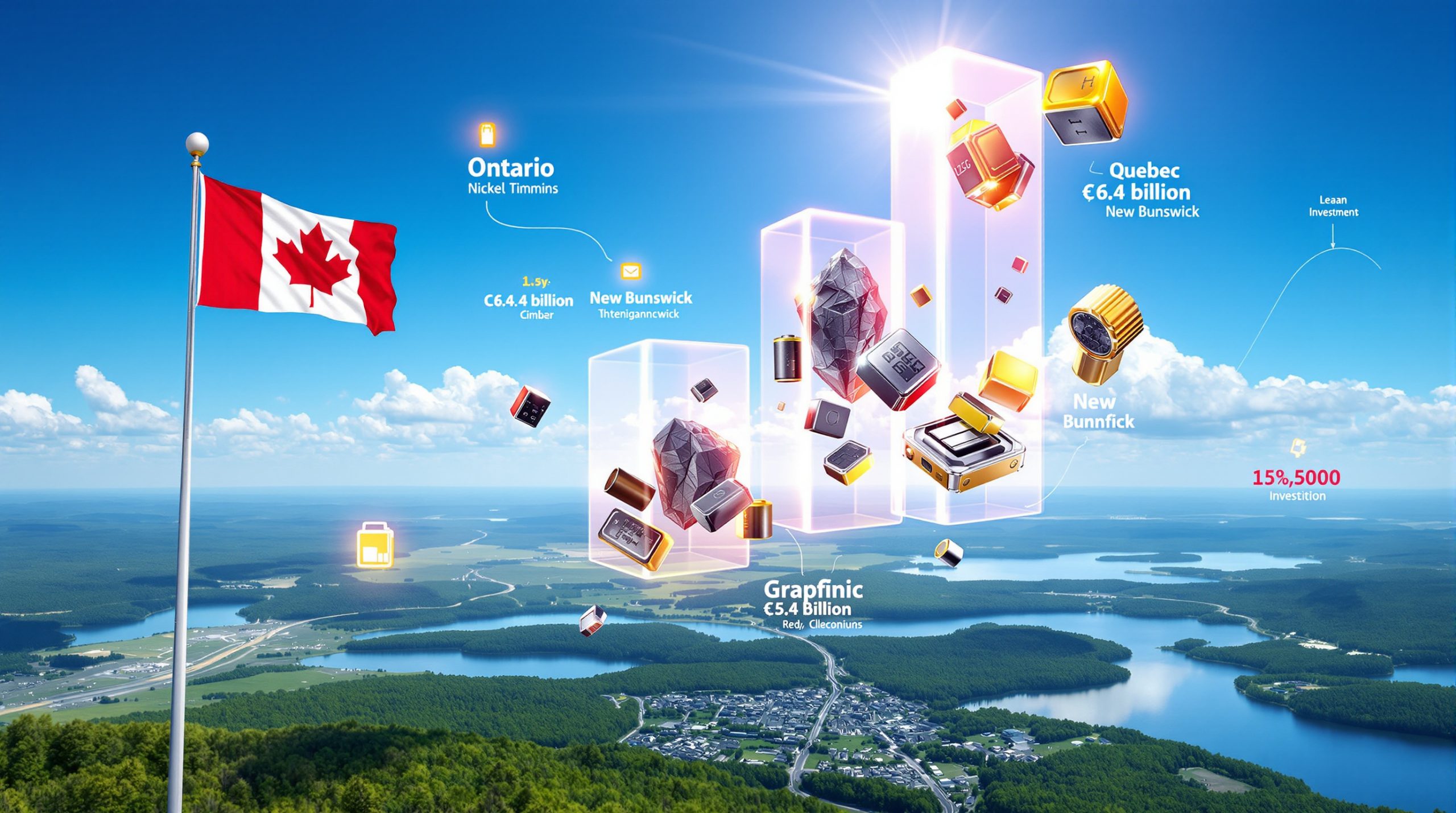Understanding China's Strategic Rare Earth Expansion
Inner Mongolia Green Energy Rare Earth Alloy Co. represents a crucial component in China's comprehensive strategy to maintain dominance over global rare earth processing capabilities. This specialised manufacturer operates within the world's most concentrated rare earth industrial ecosystem, positioned strategically to leverage proximity to raw materials and established supply chains for strengthening China's control over magnet-grade materials production.
The company's recent approval for a substantial production expansion reflects broader patterns in Chinese industrial policy, where coordinated investments across multiple facilities create cumulative advantages that extend far beyond individual project impacts. This systematic approach has proven particularly effective in maintaining technological and economic barriers that competitors struggle to overcome.
How Inner Mongolia Green Energy Strengthens China's Rare Earth Control
Strategic Positioning Within Baotou's Industrial Ecosystem
The facility's location within Baotou's Bayan Obo Rare Earth New Materials Industrial Park provides exceptional operational advantages that demonstrate the effectiveness of China's clustered industrial development model. This positioning enables the company to access feedstock directly from the Bayan Obo mining complex whilst benefiting from established separation facilities and integrated supply agreements with downstream magnet manufacturers.
The industrial park structure reduces transportation costs significantly whilst creating technical synergies between different stages of the rare earth value chain. Companies operating within this ecosystem can optimise their processes based on real-time coordination with suppliers and customers, creating efficiency advantages that standalone facilities cannot match.
China's Coordinated Rare Earth Development Strategy
Inner Mongolia Green Energy exemplifies China's systematic approach to rare earth value chain control through integrated planning across mining, processing, and manufacturing sectors. This coordination extends beyond individual company decisions to encompass government policy support, infrastructure development, and research institution collaboration.
The effectiveness of this approach becomes evident when examining capacity additions across multiple facilities simultaneously. However, examining rare earth reserves reveals the geological advantages that underpin China's strategic positioning. Individual projects may appear modest in isolation, but their collective impact creates substantial market influence that shapes global pricing and availability patterns.
China's Rare Earth Value Chain Control Elements:
- Upstream Integration: Direct access to Bayan Obo deposit materials
- Midstream Processing: Concentrated separation and refining capabilities
- Downstream Manufacturing: Integrated magnet production facilities
- Technology Development: Research institutions focused on process optimisation
- Policy Coordination: Government support for industrial expansion
Significance of the 10,000-Ton PrNd Production Expansion
Investment Scale and Technical Specifications
The approved RMB 266 million investment for Inner Mongolia Green Energy Rare Earth Alloy Co.'s new facility represents substantial commitment to expanding high-purity praseodymium-neodymium metal production capacity. Furthermore, Green Energy Rare Earths gains approval to build PrNd metal project demonstrates the regulatory support for such strategic expansions. This 24-month construction timeline indicates confidence in sustained demand growth for magnet-grade materials across multiple industrial applications.
The facility's planned annual output of 10,000 tonnes positions it as a significant contributor to global PrNd metal supply, particularly given the concentrated nature of existing production capacity. This scale enables the company to serve major magnet manufacturers whilst maintaining the quality consistency required for high-performance applications.
Market Applications Driving Demand Growth
PrNd alloys serve as essential components in permanent magnets used across rapidly expanding technology sectors. Electric vehicle motors require high-performance magnets that depend on precise praseodymium-neodymium ratios for optimal magnetic characteristics and temperature stability.
Wind turbine generators represent another major demand driver, as permanent magnet designs offer superior efficiency compared to traditional electromagnetic alternatives. The transition toward renewable energy generation creates sustained growth in magnet material requirements, particularly for offshore wind installations where reliability and efficiency considerations are paramount.
Critical PrNd Alloy Applications:
- Electric Vehicle Systems: Motor and generator components requiring high magnetic strength
- Renewable Energy Infrastructure: Wind turbine permanent magnet assemblies
- Defence Technologies: Guidance systems and advanced electronics requiring precise magnetic properties
- Industrial Automation: Servo motors and precision positioning systems
- Consumer Electronics: Hard disk drives and audio equipment components
Baotou's Position as Global Magnet Metal Production Centre
Geological and Geographic Advantages
Baotou's industrial dominance stems from unique natural resource concentrations and strategic geographic positioning. The Bayan Obo deposit contains exceptionally high concentrations of light rare earth elements, particularly neodymium and praseodymium, in ore bodies that enable cost-effective extraction and processing operations.
The integrated nature of mining operations at Bayan Obo creates additional economic advantages, as iron ore extraction provides revenue streams that support rare earth processing infrastructure development. This combination enables operators to maintain competitive cost structures even during periods of price volatility in individual commodity markets.
Industrial Ecosystem Development Over Decades
Baotou's evolution into a comprehensive rare earth processing centre reflects decades of coordinated infrastructure investment and workforce development. Multiple separation facilities, specialised alloy production companies, and research institutions have created a self-reinforcing industrial cluster that benefits from shared expertise and technical innovation.
The concentration of metallurgical expertise within the region enables rapid technology transfer between companies and continuous process improvements that enhance overall efficiency. Moreover, Baotou set to become China's rare earth hub under Inner Mongolia's 10-year plan highlights the long-term governmental commitment to expanding this industrial base. This accumulated knowledge base represents a significant competitive advantage that new entrants to rare earth processing struggle to replicate quickly.
The industrial park structure in Baotou demonstrates how coordinated development can create competitive advantages that extend beyond individual company capabilities, establishing regional expertise that becomes increasingly difficult for other locations to match.
Implications for Western Supply Chain Security
Dependency Challenges for Alternative Supply Sources
Inner Mongolia Green Energy's capacity expansion highlights the limited options available to Western manufacturers seeking alternatives to Chinese magnet-grade materials. Current non-Chinese PrNd metal production capacity remains insufficient to meet growing demand from electric vehicle and renewable energy sectors, creating vulnerabilities in critical technology supply chains.
The technical expertise required for high-purity PrNd metal production involves sophisticated metallurgical processes that require years to develop and optimise. Western attempts to rebuild domestic capabilities face challenges in attracting skilled personnel, developing process technologies, and achieving cost competitiveness with established Chinese operations.
Strategic Response Initiatives in Western Nations
Governments across North America and Europe are implementing various approaches to reduce dependency on Chinese rare earth materials through domestic capacity development and alternative supply source cultivation. Consequently, understanding critical minerals & energy security becomes paramount for strategic planning. These initiatives include direct government investment in processing facilities, research funding for alternative technologies, and strategic partnership development with non-Chinese suppliers.
However, the timeline for meaningful capacity development extends over multiple years, during which dependency on Chinese supplies will likely persist. The capital requirements for establishing competitive rare earth processing facilities exceed what many private companies can justify without government support or guaranteed off-take agreements.
Western Supply Chain Diversification Strategies:
- Domestic Capacity Development: Government-supported processing facility construction
- Alternative Supplier Partnerships: Engagement with Australian, Canadian, and African producers
- Technology Innovation Programs: Research into magnet materials requiring fewer rare earth elements
- Strategic Material Stockpiling: Government reserves for critical applications
- Recycling Infrastructure Development: Recovery systems for end-of-life magnets and electronics
Technical Aspects of High-Purity PrNd Metal Production
Metallurgical Process Requirements
High-purity praseodymium-neodymium metal production involves sophisticated processing stages that require precise control over chemical composition and metallurgical structure. The conversion from rare earth oxides to metallic form demands specialised reduction technologies that can achieve the purity levels necessary for magnet applications.
Quality control throughout the production process becomes critical for maintaining the specifications required by magnet manufacturers. Oxygen and carbon content must be minimised to prevent degradation of magnetic properties, whilst rare earth element distribution must be controlled to achieve optimal magnetic characteristics in final magnet products.
Quality Standards for Magnet Applications
PrNd metal destined for permanent magnet production must meet stringent specifications that affect both magnetic performance and manufacturing processability. Purity levels exceeding 99.5% are typically required, with particularly strict limits on oxygen content, which can cause brittleness and reduced magnetic strength in finished magnets.
The neodymium-to-praseodymium ratio significantly influences magnetic properties, with most applications requiring precise control over this balance. Temperature stability and corrosion resistance in final magnet products depend heavily on the metallurgical quality of input materials, making consistent PrNd metal specifications essential for downstream manufacturers.
Critical Quality Parameters:
| Parameter | Typical Specification | Performance Impact |
|---|---|---|
| Total Purity | >99.5% minimum | Overall magnetic strength |
| Oxygen Content | <500 ppm | Corrosion resistance |
| Carbon Content | <200 ppm | Mechanical durability |
| Nd:Pr Ratio | 4:1 standard | Temperature stability |
| Iron Content | <300 ppm | Magnetic consistency |
Impact on Global Clean Energy Transition
Material Dependencies in Clean Energy Technologies
The expansion of Inner Mongolia Green Energy's production capacity underscores the critical role of rare earth materials in global clean energy infrastructure development. Electric vehicle adoption depends heavily on permanent magnet motors that require high-performance PrNd alloys for optimal efficiency and power density characteristics.
Wind energy generation increasingly relies on permanent magnet generators that eliminate the need for slip rings and brushes, improving reliability and reducing maintenance requirements. However, this design approach creates substantial demand for rare earth magnets, making clean energy deployment vulnerable to supply chain disruptions in critical materials.
Supply Chain Vulnerability Assessment
Western clean energy initiatives face potential risks from the concentration of rare earth processing capacity in China, particularly during periods of geopolitical tension or trade policy changes. In addition, the ongoing us-china trade war demonstrates how geopolitical tensions can impact critical mineral supply chains. The time required to establish alternative supply sources creates windows of vulnerability that could affect clean energy deployment timelines and costs.
Price volatility in rare earth materials can significantly impact the economics of clean energy projects, as magnet costs represent substantial portions of overall system expenses in wind turbines and electric vehicles. Supply security considerations may require Western manufacturers to accept higher costs for diversified sourcing arrangements.
Critical Risk Factors: Supply chain disruptions could affect clean energy technology deployment schedules and increase costs for Western manufacturers dependent on rare earth permanent magnets.
Navigating Rare Earth Supply Chain Challenges
Diversification Strategies for Manufacturers
Companies dependent on rare earth materials can implement multiple approaches to reduce supply chain risks whilst maintaining production capabilities. Developing relationships with suppliers across different geographic regions helps create resilience against regional disruptions, though this approach may involve accepting higher costs for supply security.
Investment in recycling and circular economy initiatives offers potential for reducing dependency on primary rare earth materials whilst supporting environmental objectives. However, recycling infrastructure development requires substantial upfront investment and faces technical challenges in achieving the purity levels required for demanding applications.
Technology Innovation Pathways
Long-term solutions for rare earth dependency may emerge through technological advancement that reduces material requirements or enables substitution with more abundant elements. Furthermore, exploring mining innovation trends reveals potential pathways for improved extraction and processing efficiency. Research into ferrite magnets, hybrid designs, and alternative motor technologies could potentially reduce rare earth intensity in critical applications.
However, these technological approaches often involve trade-offs in performance characteristics or manufacturing complexity that may limit their applicability in demanding applications. The development timeline for breakthrough technologies typically extends over decades, making them unsuitable for addressing near-term supply security concerns.
Supply Chain Resilience Measures:
- Multi-Regional Sourcing: Supplier relationships across different continents
- Inventory Buffer Management: Strategic material stockpiles for production continuity
- Technology Diversification: Investment in alternative material research
- Recycling Infrastructure: End-of-life material recovery systems
- Supplier Relationship Development: Long-term partnership agreements with reliable sources
Future Outlook for Rare Earth Markets
Capacity Expansion Trends Across China
Inner Mongolia Green Energy's project reflects broader patterns of continued Chinese investment in rare earth processing capabilities, with emphasis on high-value downstream products rather than raw material extraction. This strategic focus enables Chinese companies to capture greater value from domestic rare earth resources whilst maintaining technological advantages in specialised applications.
Environmental compliance measures are increasingly integrated into new facility designs, addressing historical concerns about rare earth processing impacts whilst maintaining competitive positioning. These improvements demonstrate the maturation of Chinese rare earth processing technology and regulatory frameworks.
Market Development Projections
Industry analysis suggests continued growth in rare earth demand driven by clean energy technology deployment and electric vehicle adoption, with annual growth rates potentially exceeding 8-12% over the next decade. Chinese production capacity appears positioned to meet substantial portions of this demand growth, maintaining market dominance through coordinated expansion across multiple facilities.
Price volatility is likely to persist due to the concentrated nature of supply sources and the strategic importance of rare earth materials in critical technologies. Consequently, australia's strategic reserve initiatives represent important steps toward supply chain diversification. Western capacity development efforts may gradually reduce Chinese market share over time, but substantial shifts in global production patterns will require sustained investment and policy support.
Projected Market Developments (2025-2030):
| Market Metric | Current Status | Projected Trend |
|---|---|---|
| Global Demand Growth | Accelerating | 8-12% annually |
| Chinese Production Share | Dominant position | Gradual decline |
| Western Capacity Development | Limited but growing | Steady expansion |
| Price Volatility | Moderate fluctuations | Continued uncertainty |
| Technology Innovation | Emerging alternatives | Long-term potential |
Strategic Implications for Global Materials Security
Inner Mongolia Green Energy Rare Earth Alloy Co.'s expansion represents more than an individual industrial project; it demonstrates China's systematic approach to maintaining control over critical material supply chains that underpin global technology advancement. The facility's 10,000-tonne annual PrNd metal capacity strengthens an already dominant position whilst Western nations continue developing alternative supply sources.
This development emphasises the importance of strategic planning for organisations dependent on rare earth materials, highlighting the need for diversified supply chains, technological innovation, and comprehensive risk management strategies. The intersection of clean energy transition requirements with geopolitical considerations creates complex challenges that require coordinated responses from industry and government stakeholders.
The timeline for meaningful changes in global rare earth supply patterns extends over decades, during which dependency relationships established today will influence technological development paths and economic competitiveness across multiple industries. Understanding these dynamics becomes essential for strategic decision-making in sectors ranging from automotive manufacturing to renewable energy deployment.
Disclaimer: This analysis is based on publicly available information and industry observations. Rare earth market conditions, government policies, and individual company performance can change rapidly. Readers should conduct independent research and consult with qualified professionals before making strategic or investment decisions related to rare earth materials or related industries.
Want to Capitalise on Critical Mineral Discoveries?
Discovery Alert's proprietary Discovery IQ model delivers instant notifications on significant ASX mineral discoveries, including rare earth and critical mineral announcements that could reshape global supply chains. Begin your 30-day free trial today and position yourself ahead of major market movements in this strategically vital sector.




